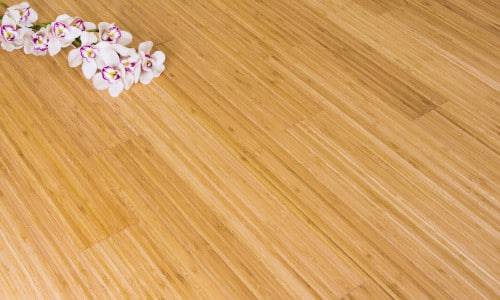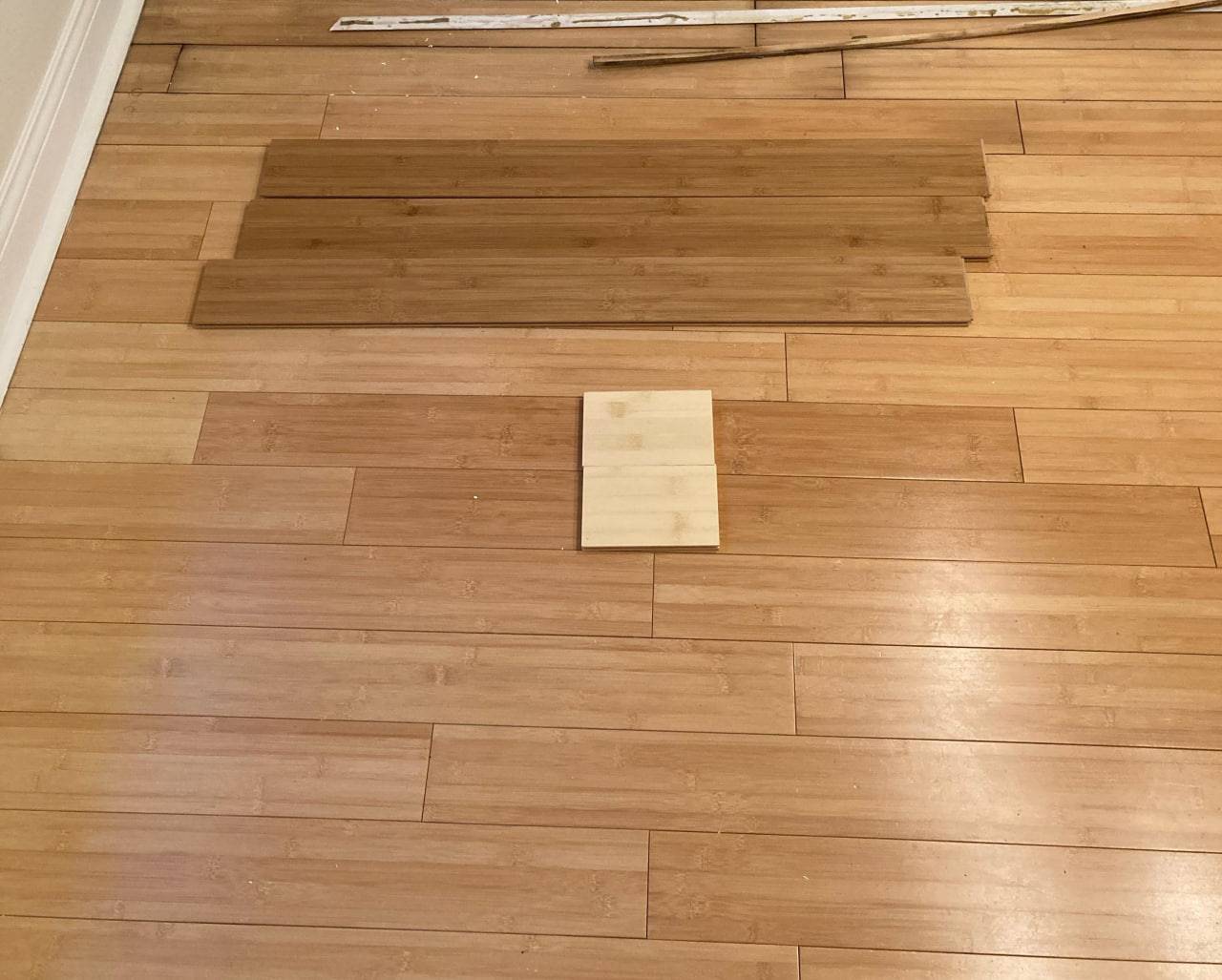Bamboo flooring, a popular choice for homeowners, is made from the durable and sustainable bamboo plant. This fast-growing grass matures quickly, making it a renewable resource. Additionally, its strength and density contribute to its resistance to scratches and dents. With a variety of colors and styles available, you’re sure to find bamboo flooring that matches your décor.
While bamboo flooring suits high-traffic areas like living rooms and hallways, avoid using it in moisture-prone areas like bathrooms and kitchens.
If you’re considering bamboo flooring, thorough research is crucial to ensure you find a reputable supplier and the right type for your needs.
Pros and Cons of Bamboo Flooring
Sure, here is a summary of the pros and cons of bamboo flooring:
Pros:
- Sustainable: Bamboo is a fast-growing, renewable resource that matures quickly, making it an eco-friendly choice for flooring.
- Durable: Bamboo is a hard and dense material, making it resistant to scratches, dents, and wear and tear. It can last for many years with proper care.
- Easy to clean: Bamboo flooring is relatively easy to clean and maintain. Regular sweeping, vacuuming, and occasional mopping with a mild cleaning solution is all that is required.
- Beautiful: Bamboo flooring comes in a variety of colors and styles, so you can find one that matches your décor.
- Hypoallergenic: Bamboo is a naturally hypoallergenic material, making it a good choice for people with allergies.
- Resistant to pests: Bamboo is naturally resistant to pests, such as termites and mold.
Cons:
- Susceptible to moisture damage: Bamboo flooring can be damaged by water and high humidity, so it is not recommended for use in bathrooms or kitchens.
- Can scratch: While bamboo is durable, it can still scratch if not properly cared for.
- Color variations: Natural bamboo flooring can have variations in color, which some people may not prefer.
- Cost: Bamboo flooring can be more expensive than some other types of flooring, such as laminate or vinyl.
Overall, bamboo flooring is a durable, sustainable, and stylish choice for flooring. However, it is important to be aware of the potential cons before making a decision.
Strand Woven Bamboo Flooring: A Budget-Friendly and Versatile Choice
Strand woven bamboo flooring is a popular alternative to solid bamboo flooring, offering several advantages, especially for budget-conscious individuals. Here’s a breakdown of its pros and cons:
Pros:
- Cost-effective: Strand woven bamboo is generally less expensive than solid bamboo due to its manufacturing process.
- Highly durable: Despite its lower cost, strand woven bamboo remains quite durable and resistant to scratches and dents.
- Dimensionally stable: Like solid bamboo, it’s less prone to warping or cupping, making it suitable for various climates.
- Versatile installation: Strand woven bamboo often comes with click-lock systems, enabling quicker and easier installation compared to solid bamboo, which might require gluing.
- Wide range of styles: Available in various colors and stain options, offering flexibility to match your desired aesthetic.
- Eco-friendly: While not as sustainable as solid bamboo, it still utilizes a fast-growing and renewable resource.
Cons:
- Less durable than solid bamboo: Although durable, it may not last as long as solid bamboo due to its layered construction.
- Susceptible to moisture damage: Similar to solid bamboo, it can be damaged by excessive moisture and is not recommended for bathrooms or laundry rooms.
- Potential color inconsistencies: Due to the manufacturing process, slight color variations may be present within planks.
- Not refinishable: Unlike solid bamboo, strand woven bamboo cannot be sanded and refinished.
Overall: Strand woven bamboo flooring is a good choice for those seeking a budget-friendly, versatile, and easy-to-install option with decent durability. However, if ultimate lifespan and refinishing ability are your priorities, solid bamboo might be a better fit.
Additional points to consider:
- Thickness: Look for thicknesses around 10mm – 14mm for good stability and wear resistance.
- Brand: Choose reputable brands that use high-quality materials and follow sustainable practices.
- Warranty: Check the warranty offered by the manufacturer for peace of mind.
Vertically Laminated Bamboo Flooring: A Unique and Modern Choice
Vertically laminated bamboo flooring stands out with its distinct aesthetic and offers several advantages, making it a popular choice for modern and contemporary interiors. Here’s a closer look at its key features:
Construction:
Bamboo strips are laminated vertically, unlike the horizontal orientation used in other types. This unique approach creates a uniform and consistent grain pattern with minimal knots or growth rings, resulting in a clean and sophisticated look that perfectly complements modern design styles.
Benefits:
- Durable: Like other bamboo flooring types, it boasts excellent resistance to scratches and dents, making it suitable for even high-traffic areas.
- Stable: Vertically laminated bamboo’s dimensional stability minimizes concerns about warping or cupping.
- Easy to clean: Regular sweeping, vacuuming, and occasional mopping with a mild cleaner are all you need for easy maintenance.
- Wide range of colors: Available in various natural and stained colors to match your desired aesthetic.
- Eco-friendly: Bamboo is a fast-growing, renewable resource, making it a sustainable flooring option.
Things to consider:
- Moisture sensitivity: Like most wood products, it is susceptible to water damage and should not be used in bathrooms or laundry rooms.
- Cost: It can be more expensive than strand-woven bamboo but comparable to some solid bamboo options.
- Refinishing: While some manufacturers claim limited refinishing capabilities, it is generally not as refinishable as solid bamboo.
Ideal for:
- Modern and contemporary interiors
- High-traffic areas
- Homeowners seeking a unique and sophisticated look
- Individuals prioritizing sustainability
Compared to other bamboo flooring:
- It offers a cleaner and more uniform look than horizontally laminated bamboo.
- It is less durable and generally more expensive than solid bamboo.
- It is more moisture-resistant than solid bamboo but less so than engineered bamboo.
Overall, vertically laminated bamboo flooring is a stylish and sustainable option for modern homes. Weigh its unique characteristics against your needs and budget to determine if it’s the right choice for you.
Horizontally Laminated Bamboo Flooring
Horizontally laminated bamboo flooring is produced by bonding bamboo strips together at a horizontal angle. This process reveals a wider grain pattern, showcasing the bamboo’s natural knuckles and growth rings more clearly than the vertically laminated alternative. This type of bamboo is often described as having a more natural appearance due to its visibility of the bamboo’s unique intricacies and shape.
To create planks thick enough for flooring, three layers of these horizontally bonded flat strips are glued together, as illustrated in the diagram above.
Apart from aesthetics, the practical characteristics of horizontally and vertically laminated bamboo flooring are quite similar. Both types possess a hardness comparable to oak flooring and are suitable for installation over underfloor heating. Both can be considered traditional options, simply because they represent the initial methods used in bamboo flooring production.
FAQs
Is bamboo flooring eco-friendly?
Yes, bamboo is a fast-growing, renewable resource, making it a more sustainable choice compared to traditional hardwoods.
Is bamboo flooring durable?
It depends on the type. Solid bamboo is the most durable, followed by engineered and vertically laminated, with strand woven being the least. All types offer good scratch and dent resistance with proper care.
Is bamboo flooring waterproof?
No, bamboo flooring is susceptible to water damage like other wood products. Avoid using it in bathrooms or laundry rooms.
Is bamboo flooring easy to clean?
Yes, regular sweeping, vacuuming, and occasional mopping with a mild cleaner are sufficient.
Can bamboo flooring be refinished?
Only solid bamboo can be refinished multiple times. Engineered bamboo might have limited refinishing potential depending on the top layer thickness, while strand woven and vertically laminated bamboo cannot be refinished.
What is the difference between solid and strand woven bamboo?
Solid bamboo is made from whole bamboo strips, while strand woven uses broken-down and compressed bamboo fibers. Solid bamboo is more durable but more expensive, while strand woven is more affordable but less durable.
What are the pros and cons of engineered bamboo?
Pros: more moisture resistant than solid bamboo, wider range of styles, click-lock installation options. Cons: less durable than solid bamboo, refinishing potential depends on top layer thickness.
What is the best type of bamboo flooring for high-traffic areas?
Solid bamboo or engineered bamboo with a thick top layer are the most suitable options for high-traffic areas due to their superior durability.
What is the best type of bamboo flooring for a modern look?
Vertically laminated bamboo offers a clean and contemporary aesthetic with a consistent grain pattern.
Where can I buy bamboo flooring?
Bamboo flooring is available at home improvement stores, flooring specialists, and online retailers.
How much does bamboo flooring cost?
The cost varies depending on the type, thickness, and brand. Solid bamboo is generally the most expensive, followed by engineered and vertically laminated, with strand woven being the most affordable.
Can I install bamboo flooring myself?
Click-lock systems in strand woven and some engineered bamboo options make DIY installation possible. However, solid and glue-down bamboo might require professional installation.




